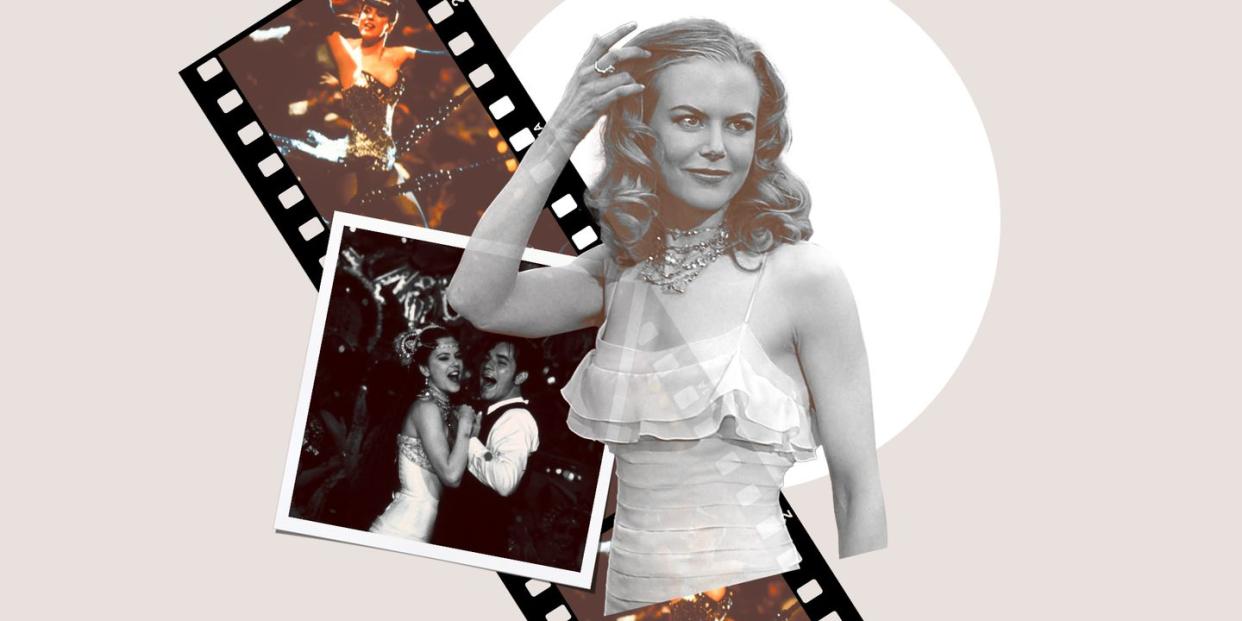The Enduring Power of 'Moulin Rouge!,' 20 Years Later

- Oops!Something went wrong.Please try again later.
At the turn of the 21st century, people were invigorated with a fresh sense of optimism and wonder. A new millennium was on the horizon and something called the Internet seemed to be showing unprecedented promise. No one knew what to expect from the 2000s, but everyone’s expectations were high. Surely, we’d all be living out the vision of the future as it was laid out in 2001: A Space Odyssey.
Popular culture reflected this exciting energy, from the refreshing palatability of bubblegum pop music to the inescapable rise of the summer blockbuster. It was a simpler time—post-Y2K and pre-9/11—when anything and everything seemed possible. Moulin Rouge! was released at the pinnacle of this fleeting era of unabashed hopefulness, in June 2001, and instantly set the mood for that summer. (To this day, it remains a beloved musical that’s since found new life on Broadway.)
In another nod to the era’s opulence, the star-packed rendition of Patti LaBelle’s “Lady Marmalade” for the movie’s soundtrack featured not one, not two, not three, but four major pop stars: Mýa, Christina Aguilera, Pink, and Lil’ Kim. The powerhouse performers delivered one of the year’s biggest hits, and the music video has since become a marker of peak camp. (Who can forget those iconic finger snaps in the opening notes?)
A new century—and, perhaps to a lesser degree, a new decade—represents limitless potential. It’s a clean slate: a chance to begin again and to set the stage for whatever you want. In the Moulin Rouge! version of 1899 Paris, artists and vagabonds dreamed of sharing their bohemian dogma—which is described in the film as “freedom, beauty, truth, and love”—with the world. In 1999, people were still craving to connect and share ideas, but this time around, that manifested in chat rooms and instant messages.
When Moulin Rouge! was released, the film encapsulated excess at a moment when it was reaching newfound heights. Google was three years old, and people were becoming spoiled by the boundless information that an all-knowing search engine could provide. Apple was on track to debut its first-generation iPod, laying the groundwork for the technology that, in just a few years’ time, would quite literally enable everyone to have the world at their fingertips.
These advancements came with a price. Wanting more and more and more—as the women chant in “Lady Marmalade”—seems harmless until you realize just how much you’ve asked for. Looking back 20 years later, it’s not a stretch to say that summer 2001 may have very well been the last summer of innocence—the final chapter in a book that’s blissfully free of the war on terror, social media, streaming services, and all the thieves of joy we’ve invented since.
Moulin Rouge! provided the perfect fantasy for that uncomplicated time. From the dizzying dance numbers to Baz Luhrmann’s signature frenetic pacing, the over-the-top film made many of us feel like bohemian revolutionaries in our own right. “Come What May”—its only original song, performed by Nicole Kidman and Ewan McGregor—was more than an anthem for hopeless romantics everywhere; it was a battle cry of sorts, a mantra for a new millennium. We all wanted whatever existed on the other side, because we believed that it would be beautiful and magnificent. In summer 2001, it was hard to envision a future that was anything but.
At the time of the film’s release, late film critic Roger Ebert said that the movie “doesn’t depend on dialogue or situation but on the way you imagine a fantasy object first from one angle and then another.” People don’t necessarily adore Moulin Rouge! for its plot—which is, at best, a love triangle trapped in a story within a story—they adore it because they can indulge their imagination. They can get lost in the pageantry, however ephemeral it may be. It’s a piece of art that can be whatever you make of it. As Ebert continued in his 2001 review, “The movie is about how we imagine its world.”
For what it’s worth, Moulin Rouge! also contains a warning that’s apt two decades later. As we emerge from a prolonged period of darkness and isolation, there’s a collective desire to celebrate, to connect, to luxuriate. And we no doubt deserve it. But no matter how grand or opulent or overdue they may be, parties and performances inevitably come to an end. The real test of resilience happens when the curtains close.
You Might Also Like

